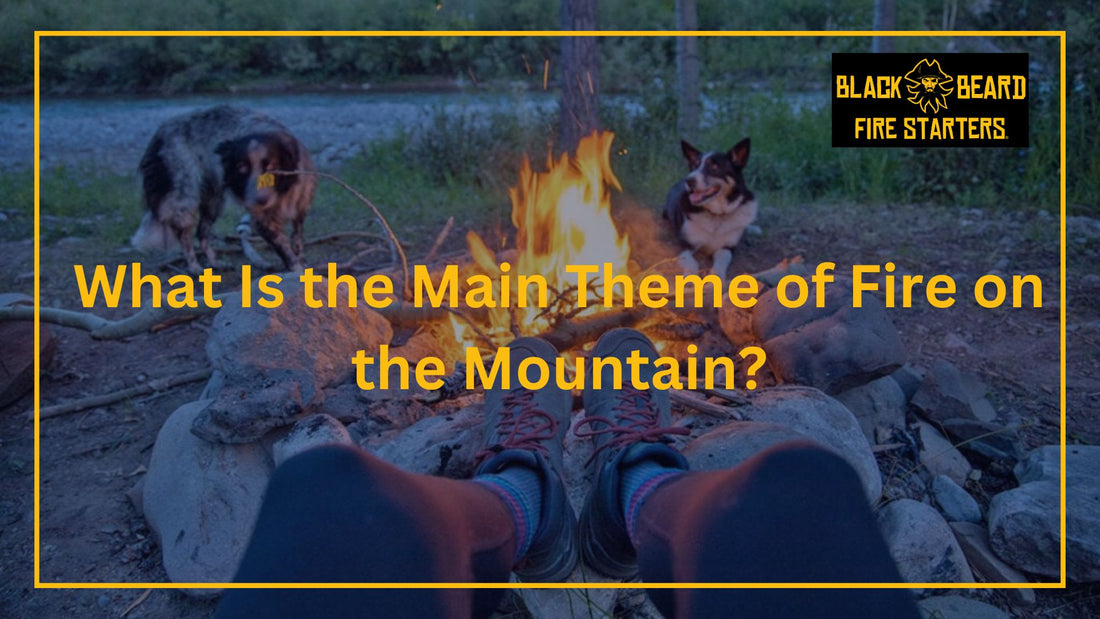While the crackling flames of a campfire may provide a sense of security in the wilderness, the question remains: does it truly protect you from wild animals? Exploring the dynamics between humans and wildlife in the presence of a campfire unveils a complex interplay of factors that influence animal behavior. From the allure of warmth to potential risks, understanding how animals perceive and react to campfires is crucial for outdoor enthusiasts. Join us as we dissect this intriguing topic and unravel the nuances of wildlife encounters in the wild.
Key Takeaways
- Campfires can influence animal behavior and deter certain wildlife due to fear of fire.
- Predators may be attracted to light and warmth, while prey tend to avoid campfire areas.
- Understanding wildlife reactions to campfires is crucial for safety in outdoor settings.
- Campfires may act as deterrents against some wildlife encounters, but not always effective against all animals.

Campfire as Wildlife Deterrent
The presence of a campfire has been studied as a potential wildlife deterrent in various outdoor settings. Firelight effects and smoke signals are believed to disrupt animal instincts and predatory patterns. Animals may exhibit varying reactions to the flame, heat perception, and overall campfire behavior. Research suggests that certain wildlife reactions indicate a level of avoidance towards areas with active campfires, attributing this behavior to their instinctual fear of fire and the unknown. Understanding animal responses to campfires is crucial for effective fire prevention strategies in wilderness areas. By delving into the relationship between campfires and wildlife, we can better comprehend the dynamics of coexistence in natural habitats and enhance safety measures for both humans and animals.
Animal Behavior Around Campfires
Campfire presence in outdoor settings has been observed to elicit distinct reactions in wildlife, potentially influencing their behavior around the flames. Wildlife's sensory perception is heightened at night, impacting their nocturnal habits near campfires. Predators may be drawn to the light and warmth, while prey species might avoid these areas to minimize risk. Survival instincts play a crucial role in how animals respond to campfires, with fear responses triggering avoidance or approach behaviors. Territorial boundaries can be blurred as animals navigate around the light source, impacting their access to food sources or disrupting social dynamics. Mating season might alter animals' interactions with campfires, influencing their behavior, and habituation effects could potentially desensitize wildlife over time.
Factors Influencing Animal Response
Factors influencing animal response to campfires can vary depending on a multitude of environmental and physiological variables. Predator reactions play a crucial role, as some predators may be attracted to the warmth and light of a campfire, while others may be deterred. The influence of fire itself can also impact animal behavior, with some species being fearful and others curious. Human scent around the campfire can alert or repel animals, influencing their approach. Noise levels from campers can either startle or habituate animals to human presence. Shelter availability, light reflection, animal habits, food sources, temperature changes, and territory boundaries are all additional factors that can significantly affect how wildlife respond to campfires.
Campfire Safety Measures
To enhance the security and well-being of individuals in outdoor settings, implementing effective campfire safety measures is imperative. When setting up a campfire, consider the following:
Fire safety: Ensure the fire is contained within a designated area.Wildlife prevention: Keep food stored properly to avoid attracting animals.
Heat management: Position yourself at a safe distance from the fire to prevent burns.
Animal instincts: Understand how wildlife may react to the presence of a campfire.
Smoke signals: Use smoke to deter animals and signal for help if needed.

Wildlife Awareness Tips
Understanding the behavioral patterns of wildlife in proximity to human campsites is crucial for ensuring the safety of individuals in outdoor environments. Wildlife tracking, predator-prey dynamics, and survival instincts play key roles in this understanding. When in the wilderness, it's essential to be aware of wildlife habitats, scent detection capabilities, and animal communication methods. Knowing about animal repellents, food sources, territorial behavior, and camouflage techniques can also aid in staying safe. By being knowledgeable about these aspects, individuals can better assess potential risks and take appropriate precautions to minimize encounters with wild animals. These wildlife awareness tips are valuable tools for outdoor enthusiasts, helping them navigate nature respectfully and responsibly while enjoying the beauty of the wilderness.
Campfire Myths Debunked
Discussing the efficacy of campfires in deterring wild animals requires a closer examination of common misconceptions and myths associated with their protective capabilities. When it comes to fire myths and animal instincts, it's essential to debunk misconceptions to ensure safety. Here are some key points to consider:
- Animal instincts may lead them to approach a campfire out of curiosity.
- Flame reactions vary among different species and can attract rather than deter animals.
- Survival tactics of animals might involve using the light and warmth of a campfire to their advantage.
- Natural reactions to fire can differ, with some animals being unbothered by flames.
- Wildlife awareness is crucial; a campfire alone may not guarantee safety from animal encounters.
Best Practices for Campfire Protection
Effective campfire protection strategies are essential for mitigating the risks associated with wild animal encounters in outdoor settings. When setting up a campfire, proper firewood selection is crucial to maintain a steady flame and minimize smoke signals that can attract animals. Fire management is key; keeping the fire at a manageable size helps in fire containment and prevents it from spreading uncontrollably. Understanding animal instincts and wildlife habits is important to anticipate their behavior around the campfire. Ensuring a safe distance between the fire and surrounding vegetation is essential for predator prevention. Adhering to fire etiquette and knowing how prey responds to fire can further enhance campfire protection. By following these best practices, individuals can enjoy their outdoor experience while staying safe from potential wildlife encounters.
Precautions for Nighttime Camping
During nighttime camping, implementing specific precautions is crucial to minimize potential risks and ensure a safe outdoor experience. Here are some essential tips to consider:
Nighttime noises: Familiarize yourself with common sounds to differentiate between wildlife and other noises.Animal tracks: Learn to identify tracks around your campsite to gauge potential visitors.
Flashlight techniques: Use red light to preserve night vision and avoid startling animals.
Wildlife calls: Understand different animal calls and know how to respond appropriately.
Sleeping bag tips: Keep your sleeping bag zipped to prevent unwelcome guests inside.
Understanding Animal Aggression Triggers
Animal aggression triggers can be influenced by a variety of factors, ranging from environmental stimuli to individual behaviors. Animals often react based on their instincts, which can be heightened by human presence, sudden movements, or changes in temperature. Noise sensitivity and visual stimuli may also trigger aggressive responses in certain species. Additionally, the availability of food sources within an animal's territory boundaries can lead to confrontations with humans. Smell detection plays a significant role, as animals can perceive scents from afar. Understanding these triggers is essential for preventing conflicts with wildlife, especially considering the time of day when animals are most active. By being aware of these factors, individuals can take precautions to minimize the risk of provoking aggressive behavior in wild animals.
Wildlife Encounters: Real Stories
Understanding animal aggression triggers is paramount when considering real-life encounters with wildlife, as these instances provide valuable insights into the complexities of human-wildlife interactions.
Close encounters: A hiker narrowly avoided a mountain lion on a trail.Unexpected visitors: Bears raiding campsites in search of food have startled many campers.
Fear factor: Surprised by a snake slithering near the tent, fear took over.
Survival instincts: A camper's quick thinking scared off a curious coyote.
Unpredictable reactions: A family of deer crossing paths with hikers had varied reactions, showing the unpredictability of wildlife encounters.
These near misses, intense moments, and heart-pounding experiences underscore the need for caution and respect when venturing into the wilderness.
Campfire Vs. Bear Encounters
In considering the effectiveness of campfires as a deterrent against bear encounters, it is essential to examine the empirical evidence regarding their impact on bear behavior and interactions with humans in the wilderness. Bear behavior can be influenced by various factors such as human scent, noise deterrents, visual stimuli, and campfire smoke signals. While campfires may create a visual and olfactory barrier, their effectiveness in deterring bears is not foolproof. Bears, driven by their predatory instincts, may still approach campsites despite the presence of a fire. It is crucial for individuals to practice fire safety measures and understand that a campfire alone may not always prevent bear encounters. In such situations, both humans and bears rely on their survival instincts, highlighting the importance of caution and preparedness in bear country.
Emergency Procedures in Wild Animal Situations
When faced with potential encounters with wild animals in the wilderness, understanding and implementing effective emergency procedures can significantly impact the outcome of such situations. In such scenarios, it is crucial to be aware of wildlife behavior and have a solid emergency preparedness plan in place. Here are some key points to consider:
Emergency signals: Knowing how to communicate distress in the wild.Animal instincts: Understanding the behaviors and tendencies of different wild animals.
Survival instincts: Utilizing your own survival skills to navigate the situation.
Safety precautions: Taking necessary steps to minimize risks during wildlife encounters.
Emergency response: Reacting calmly and swiftly in the event of animal attacks.
Conclusion
In conclusion, while campfires may offer some level of protection against wildlife, it is important to acknowledge that they are not foolproof. Factors such as animal behavior, environmental conditions, and human actions play a significant role in determining the effectiveness of campfires as a deterrent. Therefore, it would be an exaggeration to claim that campfires are a guaranteed defense against wild animals. It is imperative for individuals to exercise caution and follow proper safety measures when camping in wildlife habitats.

